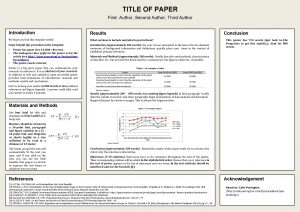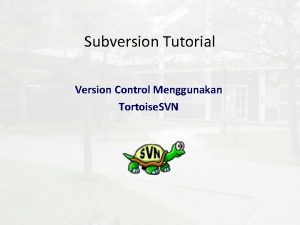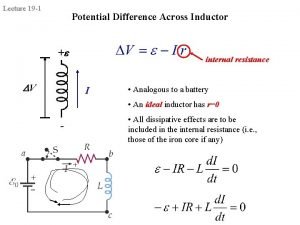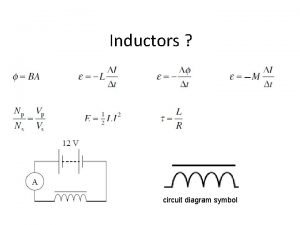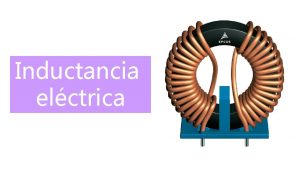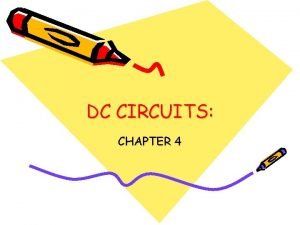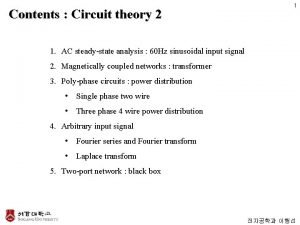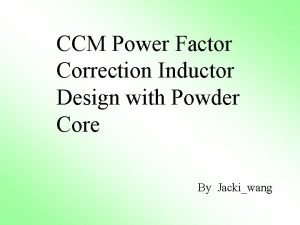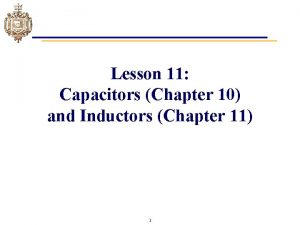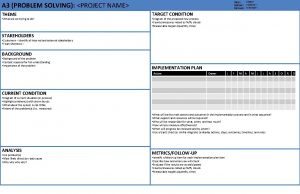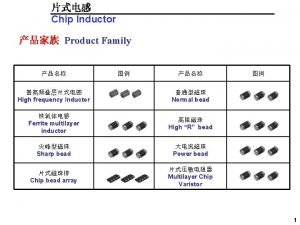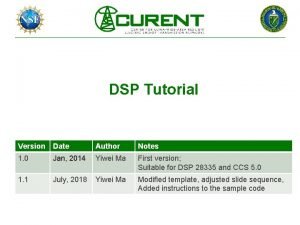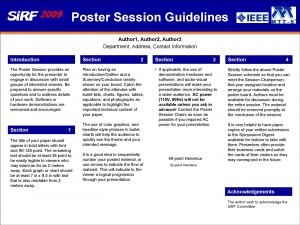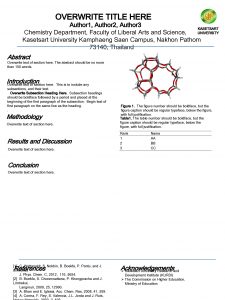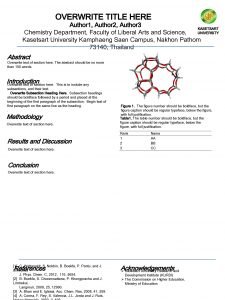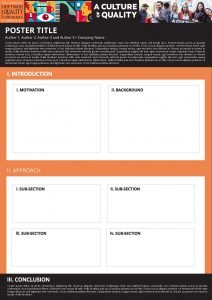Tutorial on Airgapped Inductor Design Version Date Author














- Slides: 14

Tutorial on Air-gapped Inductor Design Version Date Author 1. 0 May, 2019 Zhe Yang Notes First version; How to design inductor with air gap, consider the fringing effect

Outline • Introduction • Design method • Exemplary MATLAB code 1 -2

Inductor Design – Modeling • Electrical Magnetic Voltage, V (V) MMF (A·T) Resistance, R (Ω) Reluctance, ℜ (A·T/Wb) Current, I (A) Flux, Φ (Wb) 1 -3

Inductor Design – Typical Method • Core geometrical constant (Kg) method • Area Product (Ap) method • Limitation: fringing effect is neglected R. W. Erickson and D. Maksimovic, Fundamentals of power electronics: Springer Science & Business Media, 2007. M. K. Kazimierczuk and H. Sekiya, "Design of AC resonant inductors using area product method, " in 2009 IEEE Energy Conversion Congress and Exposition, 2009, pp. 994 -1001. 1 -4

Introduction - Fringing Effect J. Muhlethaler, J. W. Kolar and A. Ecklebe, "A novel approach for 3 d air gap reluctance calculations, " 8 th International Conference on Power Electronics - ECCE Asia, Jeju, 2011, pp. 446 -452.

Outline • Introduction • Design method • Exemplary MATLAB code 1 -6

Design Flow Chart - Part I • • Part I: for each core in the database, find the min. N and lg that meet L and B requirement Step 1. 1: pick a core k Step 1. 2: for core k, sweep N and lg Step 1. 3: for core k, Nn and lg, n, calculate Ln and Bn • Step 1. 4: evaluate Ln and Bn • Consider fringing effect in this step If no valid design for core k, move to core k+1 and step 1. 2 For valid design, go to step 1. 5 Step 1. 5: for core k, select the valid design that has lowest N Move to core k+1 and step. 1. 2 1 -7

Design Flow Chart - Part I • Example: L = 50 μH, Ipk = 30 A, Bmax = 0. 4 T • The output from step 1. 5 is the minimum N and associated lg Output at Step 1. 5 Core # Core size 1 2 3 4 5 6 7 8 9 10 E 43/21/15 E 43/21/20 E 42/33/20 E 41/17/12 E 47/20/16 E 56/28/21 E 56/28/25 E 56/24/19 E 60/22/16 E 65/32/27 Min. turn number 21 16 17 25 16 11 9 12 16 8 lg (mm) Inductance (µH) Peak flux density (T) 3. 6 2. 2 2. 4 5. 8 2. 1 1. 3 1 1. 4 2. 1 0. 9 51. 8 52. 9 51. 3 50. 0 51. 6 50. 5 54. 8 50. 5 53. 8 0. 40 0. 39 0. 37 1 -8

Design Flow Chart - Part II • • • Part II: evaluate each valid design obtained at step 1. 5 considering geometry, loss, thermal Step 2. 1: calculate the smallest AWG (thickest wire) by core geometry Step 2. 2: calculate the loss/thermal • Step 2. 3: evaluate the loss/thermal • Loss and thermal consideration needed If meeting requirement, design is considered feasible Otherwise, design rejected Step 2. 4: select optimal design if multiple feasible designs available 1 -9

Design Flow Chart - Part II • • Same requirement as before The output at step 2. 1: the smallest AWG within geometrical constraint Use AWG ≤ 10 for thermal and loss consideration in step 2. 2 The feasible designs are bold; the smallest inductor is in red Output at Step 1. 5 Core # Core size 1 2 3 4 5 6 7 8 9 10 E 43/21/15 E 43/21/20 E 42/33/20 E 41/17/12 E 47/20/16 E 56/28/21 E 56/28/25 E 56/24/19 E 60/22/16 E 65/32/27 Min. turn number 21 16 16 25 16 11 9 11 16 7 Output at Step 2. 1 lg (mm) Smallest AWG Inductance (µH) 3. 6 2. 2 2. 4 5. 8 2. 1 1. 3 1. 0 1. 4 2. 1 0. 9 12 12 11 16 13 10 8 12 10 6 51. 9 51. 8 52. 9 51. 3 50. 0 51. 6 50. 5 54. 8 50. 5 53. 8 1 -10

Outline • Introduction • Design method • Exemplary MATLAB code 1 -11

Exemplary MATLAB code • Self-explanatory comments included • Data base includes 27 single-phase EE core and round magnet wire of AWG 0000~29 • Run the code and the results are in matrix named ‘result_return’ • How to read ‘result_return’ Column 1: core_index 2: AWG number 3: Designed inductance value 4: Maximum flux density 5: Total length of air gap (the length air gap for each psot is half of this result) 6: Turn number 7: Number of turn per layer of winding 8: Number of layer for winding 9/10/11: core/winding/total loss 12: Core volume 13/14/15: Core/winding/total weight 1 -12

Exemplary MATLAB code 1 -13

Exemplary MATLAB code • If column 2 (AWG number) is ‘inf’, it means not feasible design for this core • For example in page 13: cores 1~13 do not have feasible design; cores 14~27 have feasible design • Pick a design from row 14~27 that meet your requirement, such as loss budget, AWG/current density requirement, size/weight requirement and etc. 1 -14
 First author second author third author
First author second author third author Record date dividends
Record date dividends What is ex dividend date
What is ex dividend date Tortoise version control
Tortoise version control Dokumenttien versionhallinta
Dokumenttien versionhallinta Who wrote awake united states
Who wrote awake united states Energi induktor
Energi induktor Potential difference across inductor formula
Potential difference across inductor formula Circuit inductor symbol
Circuit inductor symbol Calculo de inductancia
Calculo de inductancia Equivalent inductance
Equivalent inductance Inductor frequency response
Inductor frequency response Pfc inductor calculator
Pfc inductor calculator Plate effect
Plate effect Laplace transform electrical circuit analysis
Laplace transform electrical circuit analysis
